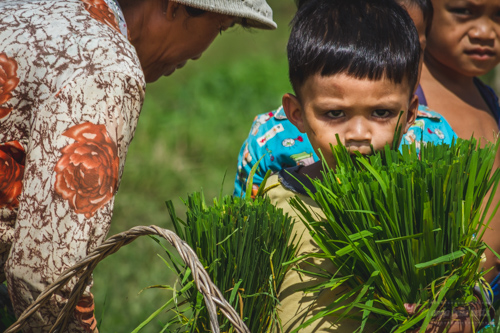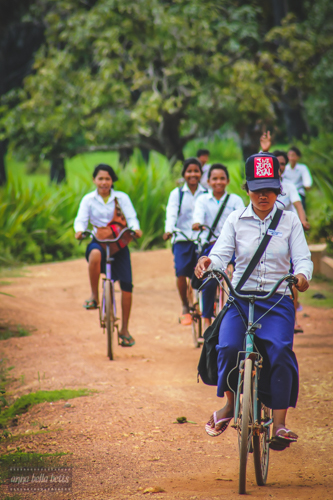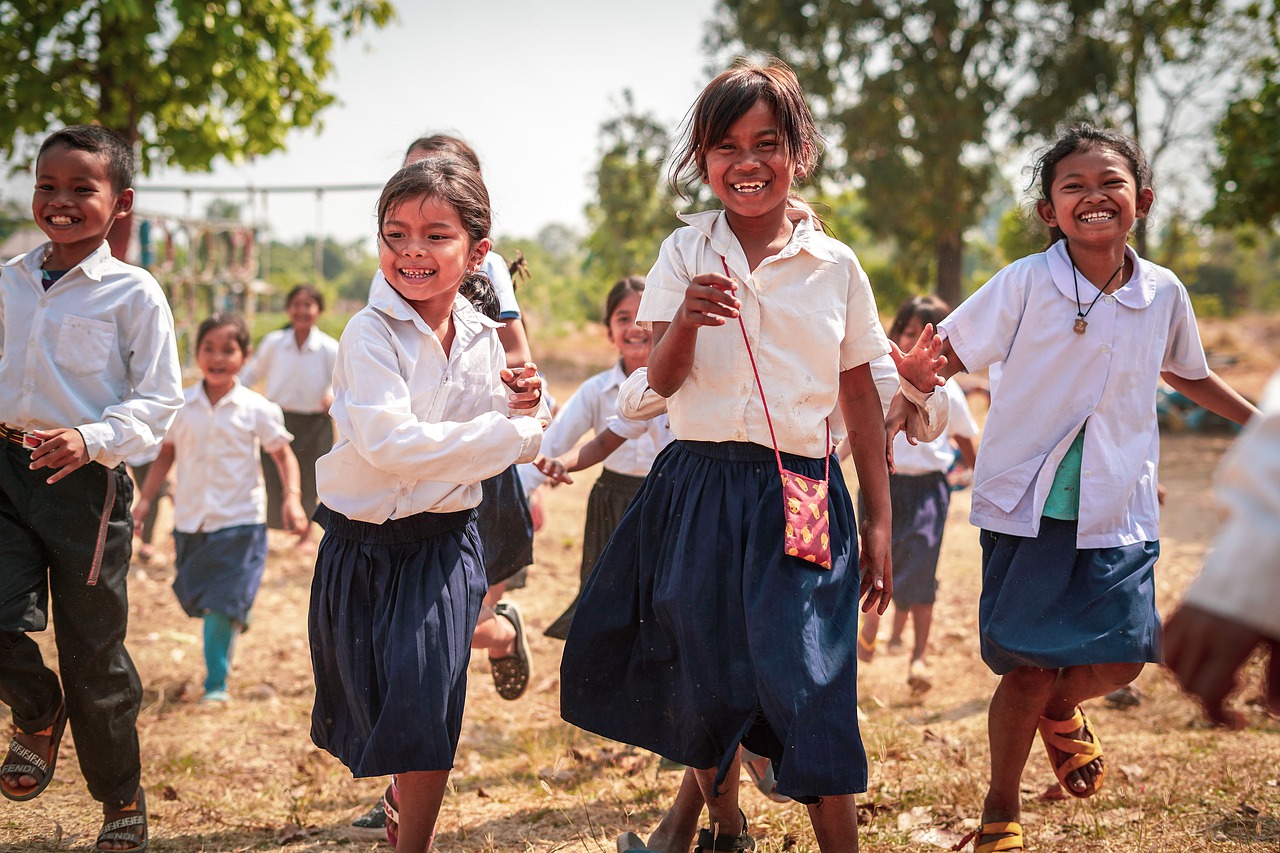I was having my morning coffee at one of my favourite caffeinating joints in town (it’s called Sister Srey and you definitely should visit if you’re ever in Siem Reap) and it was almost time for me to wrap up my life in the country. Siem Reap’s coffee places are great meeting spots and if you ever settle here as a teaching expat, then be assured that friendly faces will be popping up at you in all directions. The Little Red Fox is another such place.
I digress. I met my friend, let’s call him Mr K for the purpose of this blog and I was happy to hear that he recently got married. It turned out that his wife was a teacher and I thought: “Hey, a perfect opportunity to ask some nosy questions about her life as a Cambodian teacher and share the information with our readers!”
While holiday is still in full swing, let me introduce you to Mrs W (W for wife!). Here’s what we can call an insight into a life of a young Cambodian teacher.
What type of school do you teach in and how old are your students?
I teach primary school students, the ages range from 12 to 15 years.
Which subjects do you teach?
The main subjects I teach are Mathematics and Physics.
How many students are there in your class? Is it a mixed class? If so, what’s the approximate ratio between boys and girls?
As in all schools in Cambodia, the number of students per classroom is generally quite large in comparison to what teachers from Europe or elsewhere are used to. I teach anywhere between 40 to 55 students – they are boys and girls. Ideally I’d like to see less students in my class because it would make my life easier (imagine handling 55 12 year olds!) and the students would also have a better experience. In my class there are more girls than boys but in general there’s not much difference – both boys and girls go to school.

Bikes everywhere!
Is (primary) education in Cambodia compulsory? If so, do all children in each town/village actually go to school? What is the biggest reason for children to skip school?
Yes, primary education in Cambodia is technically compulsory, however not all children go to school as this “rule” is not strictly enforced. The issue with children dropping out of school is more evident in the countryside where from very young age kids are expected to help out on family farms, rice fields and so on. A very large percentage of the country’s population (estimated 80%) are subsistence farmers and the cycle of planting, replanting and harvesting rice is a very involved and largely manual job. Some would say backbreaking so all hands on board is the only way this can be dealt with efficiently, unless you have heavy machinery to take care of the hard work – which most people don’t. Aside from farming duties taking over, often distance plays a factor. Many kids don’t have the means of transport to travel many kilometres to school everyday.

Young helper during rice re-planting
What are the typical hours for the students who attend your school? What are your teaching hours? How do they get to school and how do you get to your workplace?
In my particular school, which is located outside the town of Siem Reap, I teach Monday to Wednesday from 7am to 11am. During the hottest part of the day the school takes a “siesta time” and then second shift of students arrives at 2pm and they finish at 5pm. From Thursday through to Saturday my school operates only between 7am to 11am. Officially my hours should amount to 18 hours per week but in reality, with all the pre and post admin work and lesson plans my hours actually end up being around 30 per week.
Most students travel to school by bicycle, the older ones also by motorbike, some walk with friends from nearby neighbourhoods. It takes me about 30 minutes to travel by my motorbike. The roads are not great and if you add a monsoon shower or two and busy traffic, it can be quite a challenge at times.

The school is over for the day in the Banteay Chhmar province

Young girl on her way to school, Siem Reap province
What is the best part of your job?
This one is easy! I love to educate people. I love to pass on knowledge and expand the students’ horizons.
What is the part of your job that you don’t like and would like to change?
There’s no point beating around the bush. My low salary is the biggest drawback. Aside from the money issue, though, I also see big gaps in the education system of Cambodia and feel that the curriculum needs an overhaul. But this is very much part of the bigger picture and reflects the current situation in the country. Too big a job for one person although I do have some great ideas!
How long have you been a teacher and what made you become a teacher?
I became a teacher in 2008 and have really enjoyed this career. As I said before, I love teaching children and the biggest reward are the new skills learned by my students, it makes me very proud. In those times I even forget about the money issues!
Have you had other jobs or would you consider a career change and if so, where?
No, I’ve always been a teacher and at this time I am not thinking about changing my vocation.

Older students on their way back from school, Phnom Bok
What is your monthly salary and does it represent teachers’ salary across Cambodia? Is this money enough for you to support your family? Are there different pay brackets according to experience and do you get your salary reviewed and receive regular payrises according to the length of your service, your experience?
My monthly salary is 880000 Khmer Riel – which, in other terms, amounts to roughly US$220*. It can be considered the very low end of the scale of the average pay in Cambodia. This money is nowhere near enough to support my (extended) family – can you imaging living on less than US$8 per day? I heavily rely on my husband’s income too and we still barely make ends meet. Regardless of the length of service there are yearly reviews and small salary increases, further increases are possible following a performance review. With the current state of the market and the ever rising inflation those increases barely make any difference.
*Fun fact: Cambodia’s official currency is the Khmer Riel and it is widely used, however the country operates on a dual currency system – the Khmer Riel and the US Dollar. The UN peacekeeping operation of 1993 (UNTAC) injected a large quantity of US Dollars into the local economy and as a result the Dollar become Cambodia’s common currency. The exchange rate is roughly 4000 KHR to 1 USD. You can pay with a combination of the two currencies. Small change is given in Khmer Riel because there are no coins so think 0.50c is 2000 KHR and so on. The smallest denomination is 100KHR and the largest is 50000KHR. There are ATMs everywhere these days and most dispense US Dollars, while others both US Dollars as well as the Khmer Riel.
Discover your own fun facts about Cambodia or other destinations – our skilled team will be happy to answer your question about your next teaching placement. Contact us to find out more.




